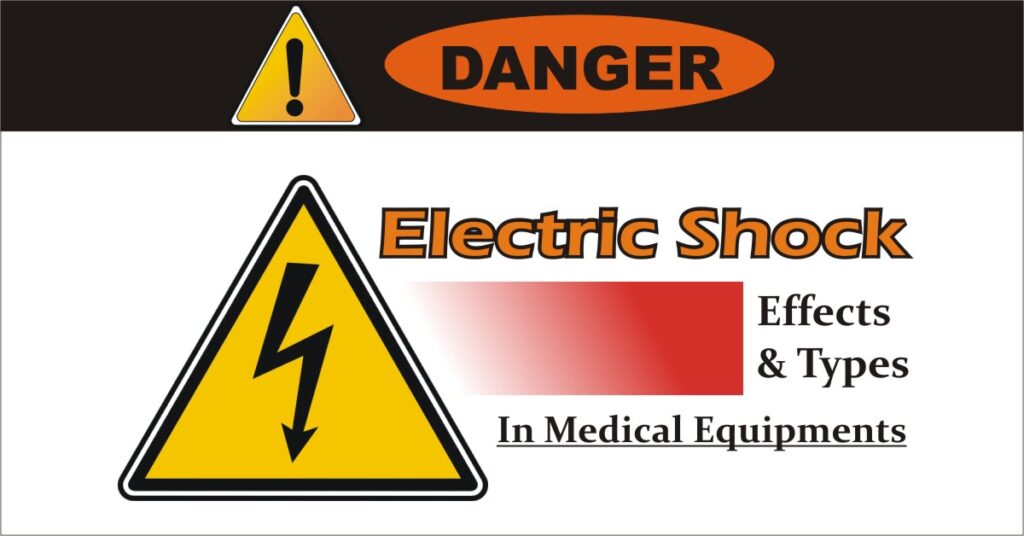As studied in Part-1 about the electrical shock hazards, now we’ll study the reasons causing electrical shocks and risking lives of patient and how devices should be designed according to formulations given by regulatory authorities.
Leakage Current
Currents of extremely small magnitude can be fatal to a patient when a direct, localized electrical path exists to the heart.
Patients in coronary care units recovering from heart diseases are specially vulnerable since their hearts are already in an irritable state. In such cases, the amount of electrical stimulation necessary to induce a life threatening arrhythmia is greatly reduced
Leakage current by definition is an inherent flow of non-functional current from the live electrical parts of an instrument to the accessible metal parts. Leakage currents usually flow through the third wire connection to the ground.
They occur by the presence of a finite amount of insulation impedance, which consists of two parts: capacitance and resistance.
Leakage currents due to capacitance between any two conductors separated in space. Current flow shall take place if an alternating voltage is applied between them.
The resistive component of leakage current arises because no substance is a perfect insulator and some small amount of current will always flow through it. Instruments are generally designed so that leakage current flows to the instrument case and then to the ground.
Leakage currents are divided according to the current path
Enclosure Leakage Current: The enclosure leakage current is the current which flows, in normal condition, from the enclosure or part of the enclosure through a person
Earth Leakage Current: The earth leakage current is the current which flows, in normal condition, to earth from the mains parts of an apparatus via the earth conductor.
Patient Leakage Current: The patient leakage current is the current which flows through the patient from or to the applied part of the patient circuits.
Safety code for electromedical equipment
To prevent electrical shock hazards ,The International Electrotechnical Commission (IEC) has brought out a fairly voluminous document, the IEC 60601-1 (General Requirements for the Safety of Medical Electrical Equipment), to provide a universal standard for manufacturers of electromedical equipment as well as a reference manual on good safety practice
The intention of the common standard is that any electromedical equipment built to the standard should be completely acceptable in all IEC countries
Electrical Safety Analyzer
- Mechanical Testing of Electrical Outlets
- Electrical Testing of Electrical Outlets
- Grounding System in Patient Care Areas
The voltage between a reference ground point and exposed conductive surfaces should not exceed 20 mV for new construction. For existing construction, the limit is 500 mV for general care areas and 40 mV for critical care areas.
Modern safety analyzers are digital reading meters incorporating facilities for measuring enclosure leakage current, patient leakage current and ground continuity tests.
Besides these, they have provisions to carry out insulation tests at 500 V and isolated power system tests.
An advanced and automated electrical safety analyzer 601PROXL is available from M/s Fluke Biomedical which meets stringent international standards for electrical safety testing of hospital and laboratory electromedical equipment.
The Analyser conducts electrical safety testing in accordance with IEC 601-1, VDE 751, VDE 701, HEI 95, IEC 1010, AAMI, and AS/NZS 3551 requirements, flags failures, and simulates performance, ECG, and arrhythmia waveforms.
Design recommendations for electrical shock hazard prevention
While designing any biomedical equipment following points should be kept in mind for preventing any kind of electrical shock hazard on patient:
- Reliable Grounding for equipment
- Reduction of Leakage current
- Double insulated Equipment
- Operation at low voltage
- Driven Right Leg
- Current Limiters
- Electrical Isolation of heart connection
